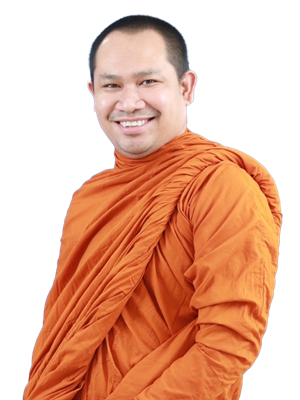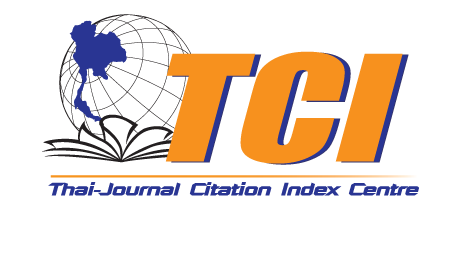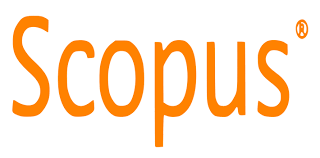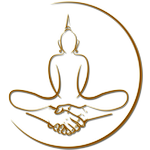KNOWLEDGE AND LEARNING AT WAT PHRA PATHOM CHEDI: A CASE STUDY OF BUDDHIST TOURISM
Keywords:
Buddhist Learning Centers, Buddhist Knowledge, Wat Phra Pathom Chedi Ratchawora MahawihanAbstract
Background and Objectives: Wat Phra Pathom Chedi Ratchawora Mahawihan, located in Nakhon Pathom Province, was a renowned destination for both educational and religious tourism, attracting 87 percent of visitors. The research study revealed a deficiency in the systematization of information and the availability of knowledge regarding archaeological sites and antiques within Wat Phra Pathom Chedi. The objective of this research article was to gather information about the qualities and types of knowledge associated with Wat Phra Pathom Chedi, located in Nakhon Pathom Province, as a Buddhist learning center for tourism.
Methodology: This research employed content analysis of documents and relevant studies obtained from the online bibliographic database of Silpakorn University Central Library. Additionally, information from the Thai Theses Database (ThaiLIS), Thailand Central Electronic Journal Database (ThaiJO), and expert interviews was utilized to verify the accuracy of the gathered information.
Main Results: The initial research findings indicated that Wat Phra Pathom Chedi possessed knowledge in the field of archaeological sites and antiquities. This knowledge was divided into eight categories: Information on the historical background of the Buddha, Buddhist principles, architectural styles, works of art, Dhamma practice, activities, traditions, and the worship of sacred objects.
Involvement to Buddhadhamma: This research explored the application of Buddhism in contemporary contexts, integrating modern scholarship with traditional Buddhist knowledge to develop wisdom and morality through Buddhism. Specifically, it examined the characteristics and typologies of Buddhist knowledge preserved within the ancient sites and artifacts of Phra Pathom Chedi Temple. By systematically organizing and disseminating this knowledge, the research aimed to transform the temple into a prominent educational tourism destination, thereby enhancing public accessibility to Buddhist teachings.
Conclusions: Wat Phra Pathom Chedi served as a prominent Buddhist learning center for tourism in Nakhon Pathom Province. The site contained a diverse range of knowledge, including archaeological sites and artifacts that had been created based on the principles and beliefs of Buddhism. The research findings indicated that the types of knowledge could be divided into tangible and intangible forms. The tangible knowledge included ancient sites within the temple, consisting of various buildings such as chedis, temples, chapels, bell towers, and a chapel (Ubosot). Additionally, the antiquities discovered at the site consisted of Buddha statues, mural paintings, and Dhamma inscriptions. The intangible knowledge included traditional events, legends, and activities on important Buddhist days. The Phra Pathom Chedi Temple encompassed multiple qualities of knowledge, including the history of the Buddha, Buddhist principles, architecture, art, Dhamma practice, events on significant Buddhist occasions, traditions, and the worship of sacred objects. Wat Phra Pathom Chedi functioned as a Buddhist learning center for both tourists and the local community. Its purpose was to inspire individuals to independently pursue knowledge, thereby promoting the growth of Buddhist and cultural tourism. This research had limitations in terms of scope, as it focused solely on the study area of Wat Phra Pathom Chedi in Nakhon Pathom Province. The purpose of this study was to gather data from a prototype system that could potentially be used to expand data collection to other temples and be developed into a virtual tour system, which could serve as a Buddhist learning center for tourism and contribute to a more comprehensive tourism experience.
References
Aditheppong, W. (2018). Management Policy Suggestions Concerning Temple Tourist Attraction Development as Creative Learning Resources. [Unpublished doctoral dissertation]. Silpakorn University. Nakhon Pathom, Thailand.
Aphilak, K. (2015). The Legend of Phya Kong and Phya Phan: A Trace of Relationship of People in Western Thailand. Journal of Thai Studies, 11(1), 219-256.
Baloian, N., Biella, D., Luther, W. & Pino, J. A. (2021). Designing, Realizing, Running, and Evaluating Virtual Museum-a Survey on Innovative Concepts and Technologies. Journal of Universal Computer Science, 27(12), 1275-1299.
Chumnong, R. & Surapol, N. (2010). Murals at Phra Pathom Chedi. Nakhon Pathom, Thailand:
Wat Phra Pathom Chedi.
Gnoli, C. (2020). Introduction to Knowledge Organization. London, United Kingdom: Facet Publishing.
Jeerawan, N., Somjai, P. & Sutisa, P. (2017). Information Design for Managing Knowledge of Phapathomjadee Temple Nakhonpathom Province. Veridian E-Journal Science and Technology Field, 4(3), 174-190.
Masci, M. E., Annamaria, D. S., Fernie, K. & Pletinckx, D. (2012). 3D in the CARARE project: Providing Europeana with 3D content for the archaeological and architectural heritage: The Pompeii case study. 2012 18th International Conference on Virtual Systems and Multimedia, Milan, Italy, 2012, 227-234, http://dx.doi.org/10.1109/VSMM.2012.6365929.
Nakhon Pathom Provincial Cultural Office. (2017). Handbook of Historical Tourist Route: Nakhon Pathom Province. Nakhon Pathom, Thailand: Phetkasem Printing Group Limited.
Nakhon Pathom Provincial Cultural Office. (2022). Vision of Nakhon Pathom Provincial Cultural Office. Nakhon Pathom, Thailand: Nakhon Pathom Provincial Cultural Office.
Narin, S. (2011). A Study of Situation of Cultural Tourism in Nakhon Pathom Province. Nakhon Pathom, Thailand: Research and Development Center Silpakorn University.
Narumon, B. (2007). The Restoration of Phrapathomchedi Pagoda: A Case Study from Archives. [Unpublished master's dissertation]. Silpakorn University. Nakhon Pathom, Thailand.
National Statistical Office of Thailand. (2018). Survey on Conditions of Society, and Culture and Mental Health Year 2018. Bangkok, Thailand: National Statistical Office.
Patsupa, L. (2008). Buddhist Tourism: A Case Study in Cultural Resources in Bangkok. Thesis for [Unpublished master's dissertation]. Mahamakut Buddhist University. Bangkok, Thailand.
Peerapat, S. (2004). Concept and Symbolism in The Architectural Design of Phra Pathom Chedi. [Unpublished master's dissertation]. Silpakorn University. Nakhon Pathom, Thailand.
Phatsasi, R., Pongnakorn, P. & Pienghatai, P. (2022). Tourism Management Policy on Buddhism in The Eastern Special Development Zone. Journal of Interdisciplinary Innovation Review, 5(2), 140-149.
Phongsakorn, Y. (2016). Archival Record: Phra Ruang Rojanarit Sri Indraditya Dhammobhas Mahavajiravudhraj Pujaneeya Bophitr. Chamchuri Journal, 18(3), 41-45.
Phra Athikan Nirandorn Phrommachan, Phramaha Thongchai Thammathwee, Phrakan Kaewrung, & Phrawichan Jomkhorng. (2020). Roles of Buddhist Monks in Promoting Community Learning Resources: A Case Study of Wat Phrathat Rueangrong, Sisaket Province.
Journal Of MCU Ubon Review, 5(1), 124-138.
Phra Maha Boonyang Thitiyano (Khontha). (2010). A study of Phra Pathom Chedi as A Symbolic Way of Achieving Understanding About Buddhism. [Unpublished master's dissertation]. Mahachulalongkornrajavidyalaya University. Bangkok, Thailand.
Phra Phrom Wethi. (2017). A Story of Phra Pathom Chedi. Kanchanaburi, Thailand: Thammathee-Sahai Phatthana Printing.
Phramaha Songkhram Sumedho (Chanthakiri). (2014). Concept, Value and Social Power Building of Wat Phra Pathom Chedi Rajavaramahavihara, Phra Pathom Chedi Sub-district, Muang District, Nakhon Pathom Province. [Unpublished master's dissertation]. Mahachulalongkornrajavidyalaya University. Bangkok, Thailand.
Pimpila, K. & Lattagarn, K. (2022). The Development of Augmented Reality Application to Guide Tourists in Tourist Attractions in Sa Kamphaeng Yai Sanctuary at Utumpon Phisai District in Sisaket Province. Parichart Journal, Thaksin University, 35(4), 116-131.
Praphat, C. (2011). The 5 Great Pagodas of Siam. Nonthaburi, Thailand: Museum Press.
Sasinipha, H., Yota, C. & Phramaha Narongsak Sutanto (Suthon). (2023). An Analysis of Buddhist Principles as Appeared in Buddhist Art in The Dvaravati Period. Journal of Institute of Trainer Monk Development, 6(1), 233-245.
Shinawut, C. (2004). An Analytical Study of The Ethical Principles in The Inscription at Phrapathom Chedi. [Unpublished master dissertation]. Mahidol University. Bangkok, Thailand.
Somboon, W., Reongwit, N., Prayoon, S. & Suvin, R. (2023). An Integration of Buddhism in Order to Create Values in Accordance with Suvarnabhumi in The Case of Wat Phra Pathom Chedi. Dhammadhara Journal of Buddhist Studies, 9(1), 80-111.
Somchai, K. (2013). Journey To Nakhon Pathom (Poem): Historical Background of Phra Pathom Chedi. Bangkok,Thailand: P.P.K Printing.
Sotarintra, C. (2021). The Strategy of Buddhist Tourism Model in ASEAN. Journal of Graduate Studies Review, 17(1), 85-99.
Thanagon, B. (2014). Design Doctrine on Mural Painting of Angel Assembly by Praya Anusat Jitrakorn (Chand Jitrakorn) At Prapathom Chedi Temple. [Unpublished master's dissertation]. Silpakorn University. Nakhon Pathom, Thailand.
Thanawat, D., Juthamas, S., Somnikarn, S., Sitanun, P. & Yaowadee, C. (2020). The Development of a Model of Interpretations of Historical Tourism with QR CODE System for Self-Reliance in Information Perception at Wat Phra Pathom Chedi Ratcha Wora Maha Wihan. The 12th NPRU National Academic Conference, 12(1), 2791-2799.
Thanin, S. (2020). SPSS and AMOS: Research and Data Analysis. Bangkok, Thailand: Business R&D.
Tourism Authority of Thailand. (2017). Direction Towards Thailand's Sustainable Tourism Development. Bangkok, Thailand: Tourism Authority of Thailand.
Wannakorn, C. (2013). The Evaluation of Cultural Resource Management for Tourism: A Case of Wat Phra Pathom Chedi, Nakhon Pathom Province. [Unpublished master's dissertation]. Silpakorn University. Nakhon Pathom, Thailand.
Working group of Nakhon Pathom Tourism Attraction Information Collection Project. (2012). Follow The Traces of Phya Phan: Nakhon Pathom Tourism Attraction Information Collection Project. Nakhon Pathom, Thailand: Sanamchandra Palace Library Silpakorn University.

Downloads
Published
How to Cite
Issue
Section
License
Copyright (c) 2025 Journal of Buddhist Anthropology

This work is licensed under a Creative Commons Attribution-NonCommercial-NoDerivatives 4.0 International License.







